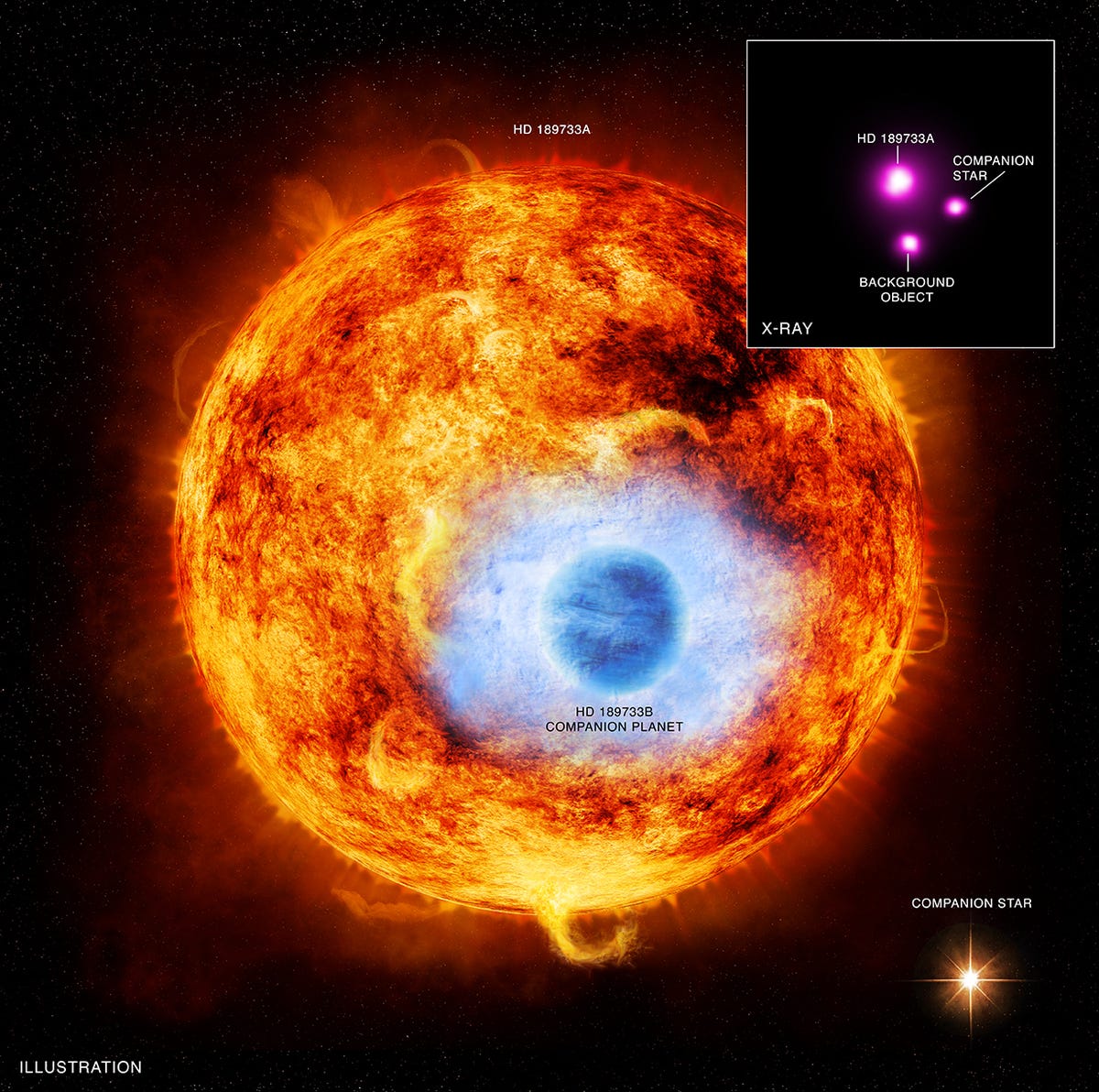
Exoplanet eclipse
For the first time since exoplanets were discovered nearly 20 years ago, X-rays have been used to picture an exoplanet passing in front of its parent star.
NASA's Chandra X-ray Observatory and the European Space Agency's XMM Newton Observatory on Monday observed the dip in X-ray intensity as the planet, HD 189733b, eclipsed its parent star in a system 63 light-years from Earth.
The X-ray image captured by Chandra, inserted in the illustration above, provides scientists a breadth of new information about the planet's properties and the environment it inhabits. The exoplanet itself cannot be seen in the Chandra image, as transits involve measuring small decreases in X-ray emission from the main star.
Launched on July 23, 1999, NASA's Chandra X-ray Observatory is a telescope specifically designed to detect X-rays from high-energy regions of the universe such as such as exploded stars, clusters of galaxies, and matter around black holes. Click through this gallery to see some of the amazing images Chandra helped capture.

